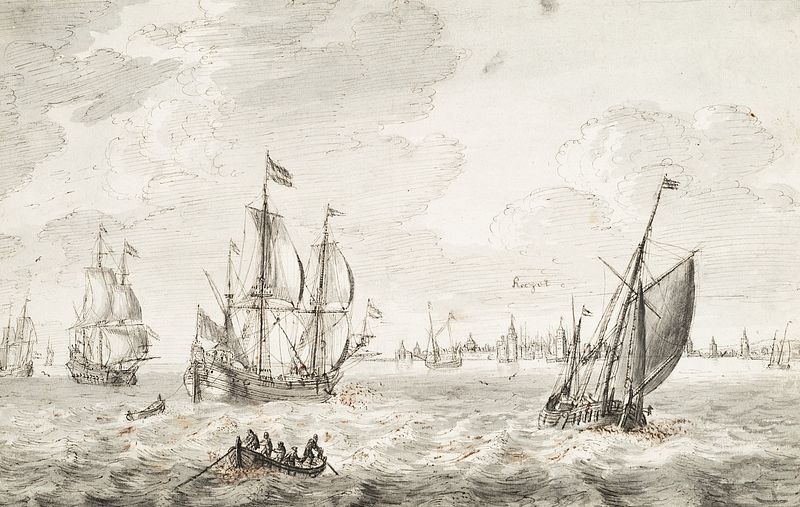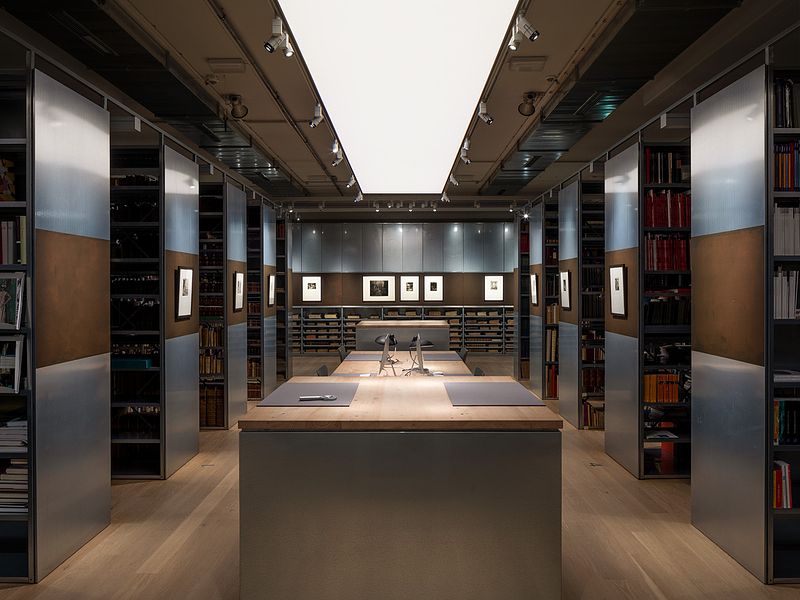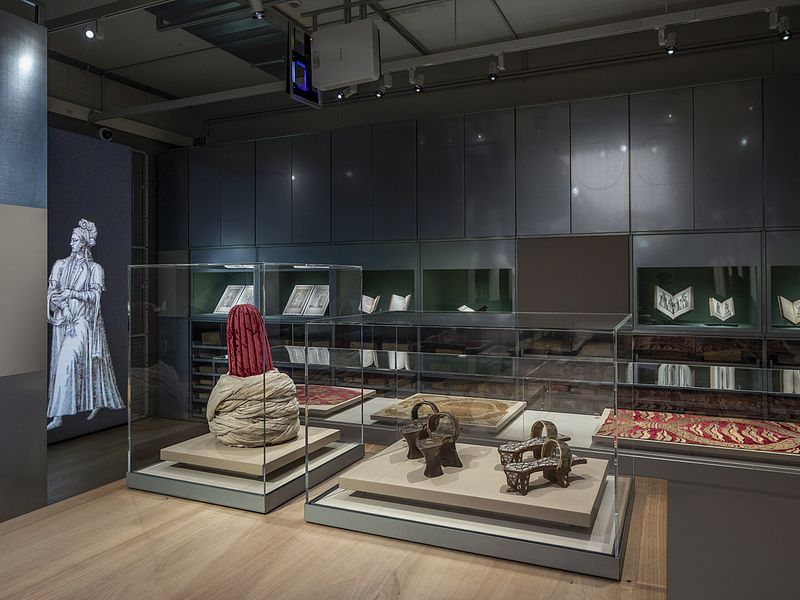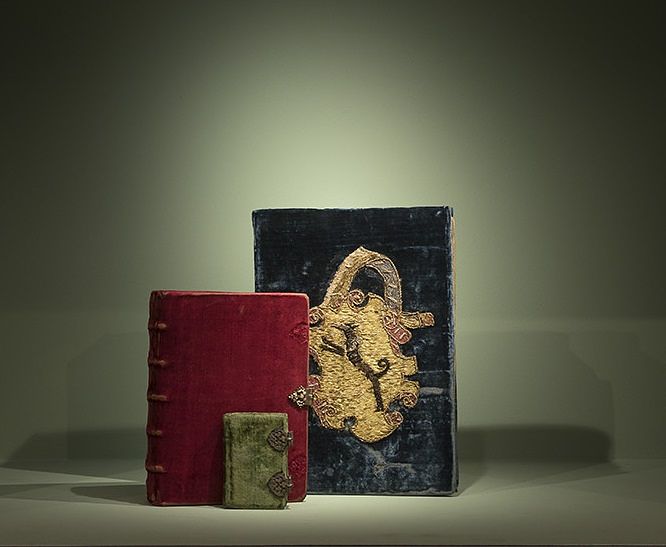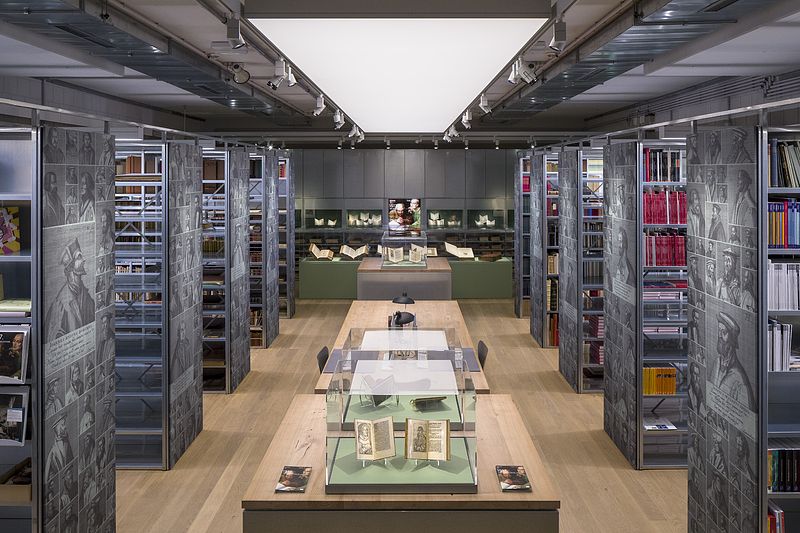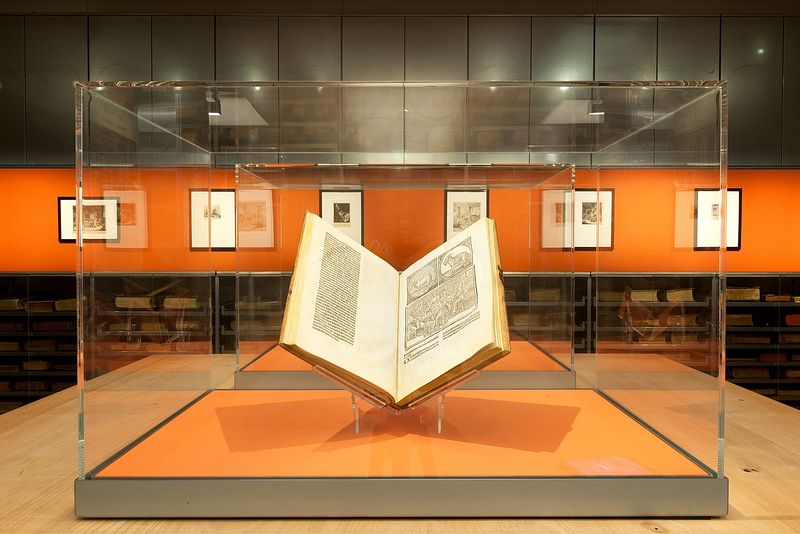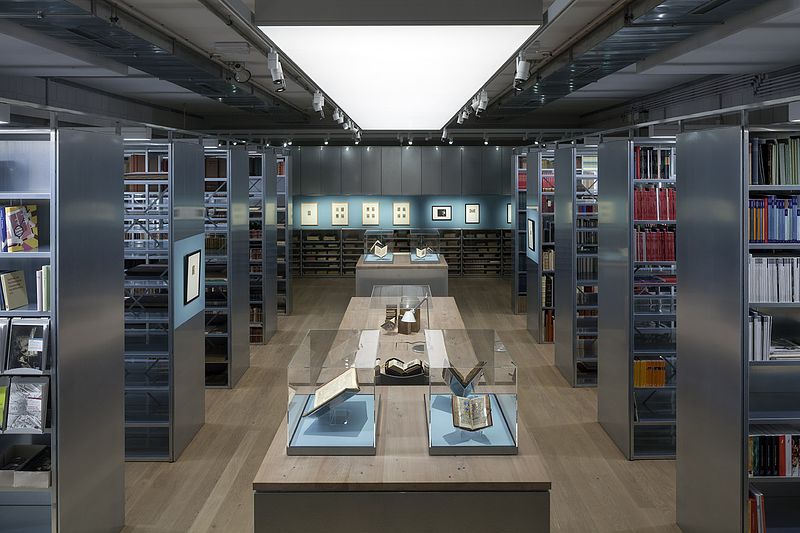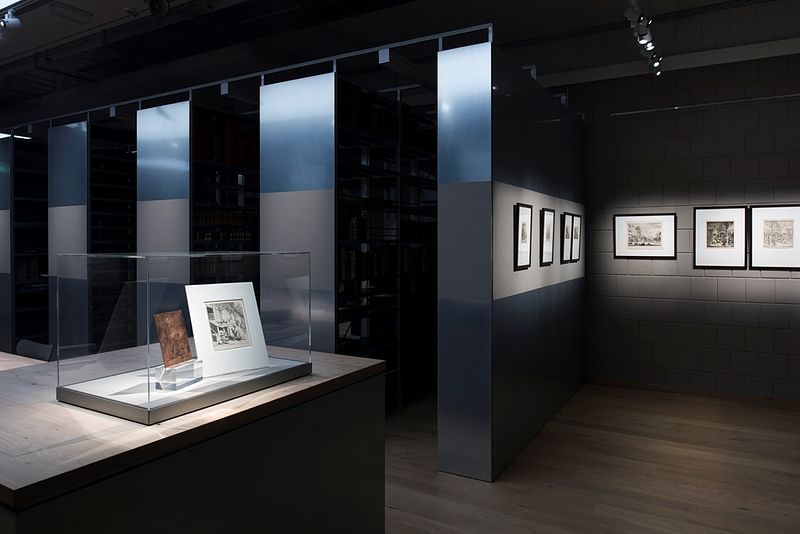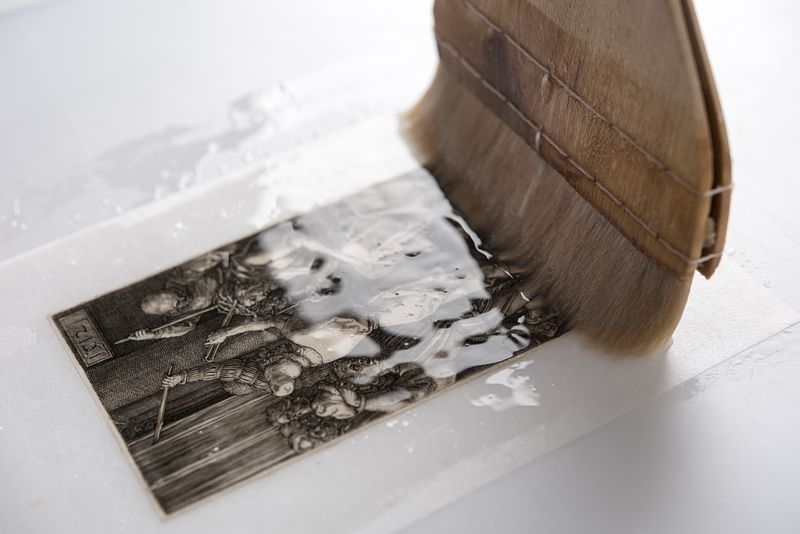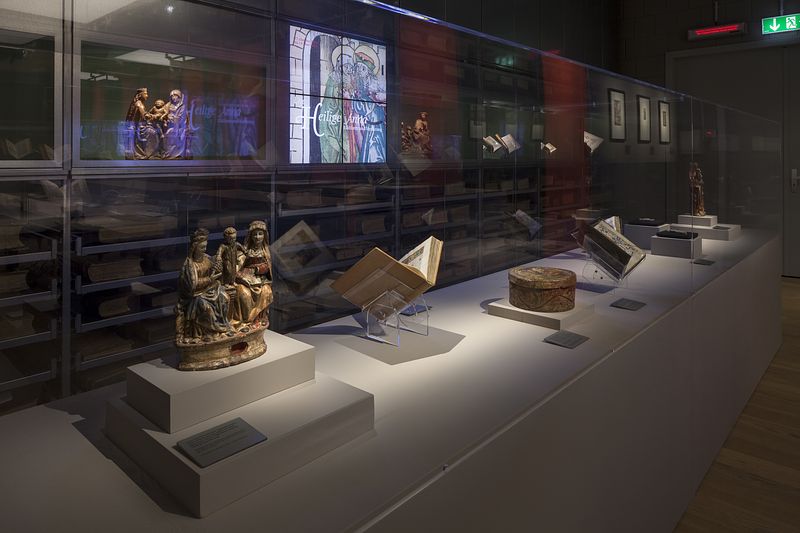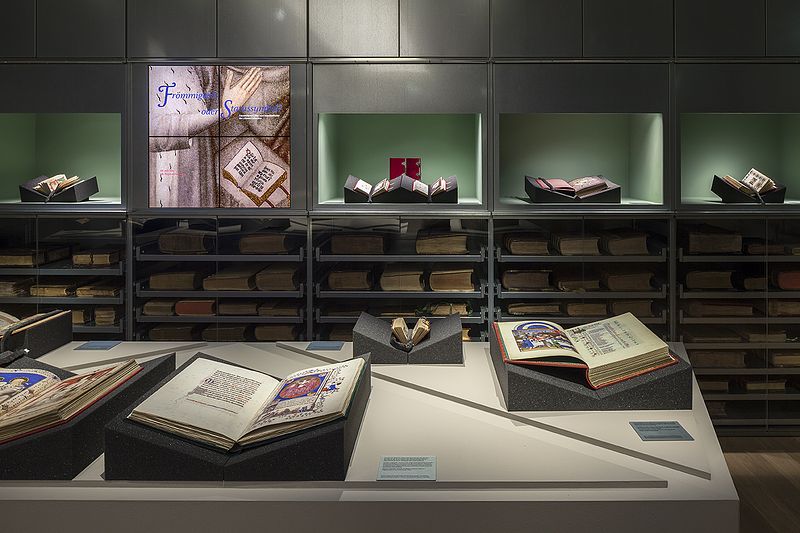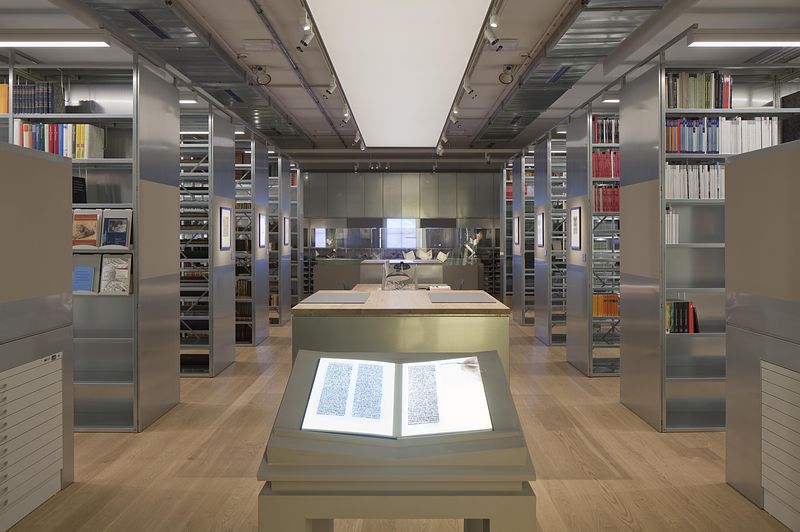STUDY ROOM
Officially opened 2013, the Study Room serves simultaneously as a storage facility, study library and cabinet exhibition space. It houses the outstanding collection of books and graphic art founded by Bernard Brenninkmeijer (the Liberna Collection), as well as other holdings in the sphere of the graphic arts, including a collection of high-quality manuscripts and miniatures (the Tuliba Collection), an extensive collection of facsimiles reproducing some of medieval Europe’s most outstanding manuscripts (the Libisma Collection), and a collection of sixteenth- and seventeenth-century books with a topographical focus.
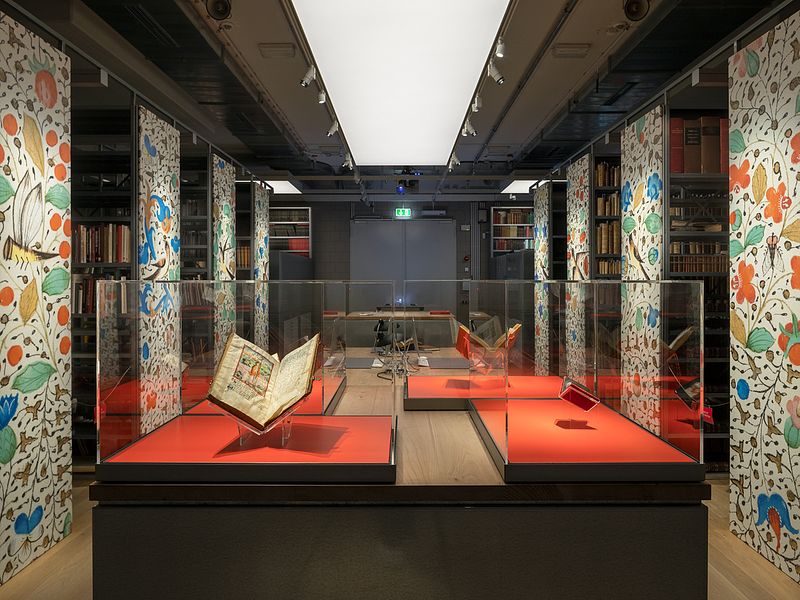
Exhibition view ON THE THIRD DAY ...
| © Draiflessen Collection, Foto: Henning Rogge
Planning
The Study Room was planned in such a way that it remains visible as an art collection and a library collection. It thus fulfils multiple requirements: it is accessible to visitors, and the collections are housed so that they can be viewed and consulted. Not only the Draiflessen team, but also students and academics are invited to work and pursue their research at a large desk, with the holdings all around them.
We also spotlight individual facets of the collections in regularly changing cabinet exhibitions on a wealth of different themes. Magnetic boards and flexible-use display cases allow the exhibition space to be transformed each time. The map drawers, on the other hand, and the bookshelves in which the objects are safely stored, remain fixed in place. Everything is thereby oriented towards the private studioli of the Renaissance era, in which works of art, literature and contemplation were closely intertwined.
We also spotlight individual facets of the collections in regularly changing cabinet exhibitions on a wealth of different themes. Magnetic boards and flexible-use display cases allow the exhibition space to be transformed each time. The map drawers, on the other hand, and the bookshelves in which the objects are safely stored, remain fixed in place. Everything is thereby oriented towards the private studioli of the Renaissance era, in which works of art, literature and contemplation were closely intertwined.
Exhibition and work space
The Study Room is a multifunctional but no less aesthetic exhibition space and workspace, in which Draiflessen Collection staff and all interested parties can not only work, but also discuss, marvel at and linger over the objects on display.
Creating exhibition-related scenographies in the middle of a collection is a major challenge, given that the objects must be stored in a stable and controlled climate in line with museum standards. For the paper objects making up the majority of the holdings, in particular, it is necessary to maintain a temperature of 20°C and a relative humidity of 53%. These storage conditions are typically provided in a designated depot inaccessible to museum visitors. For fire prevention reasons, the oxygen level in the Study Room is normally reduced to below 15%. Unlike our two other exhibition spaces, therefore, the Study Room must be prepared for visitors and the oxygen level must be increased accordingly.

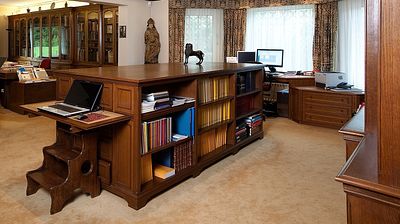
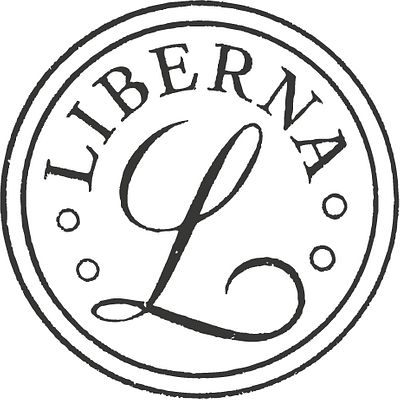
.jpg?locale=en)
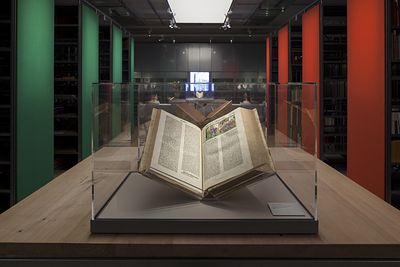
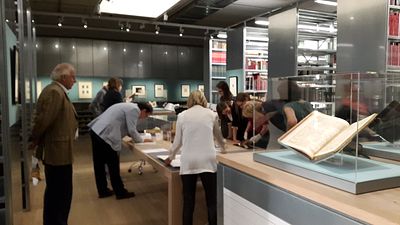
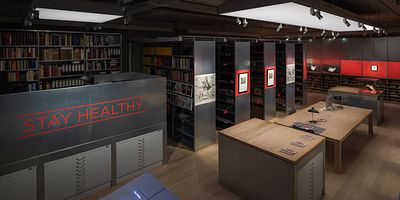
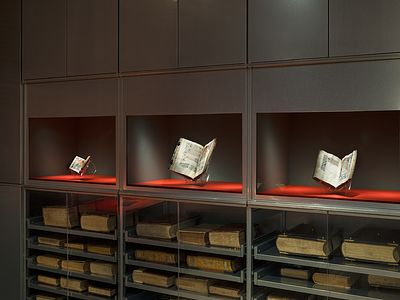
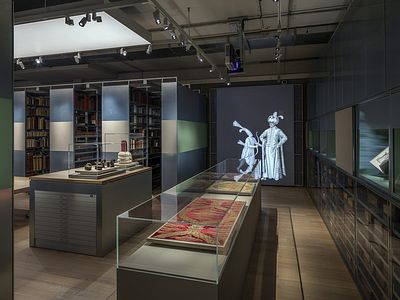
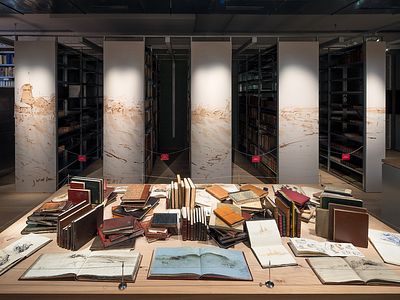

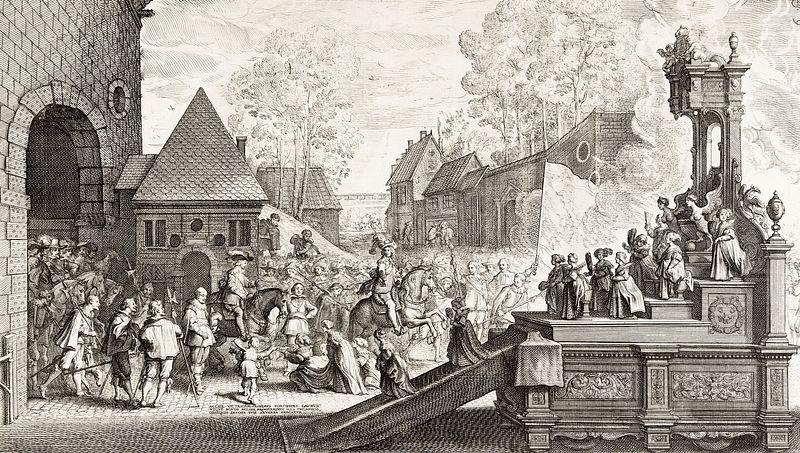

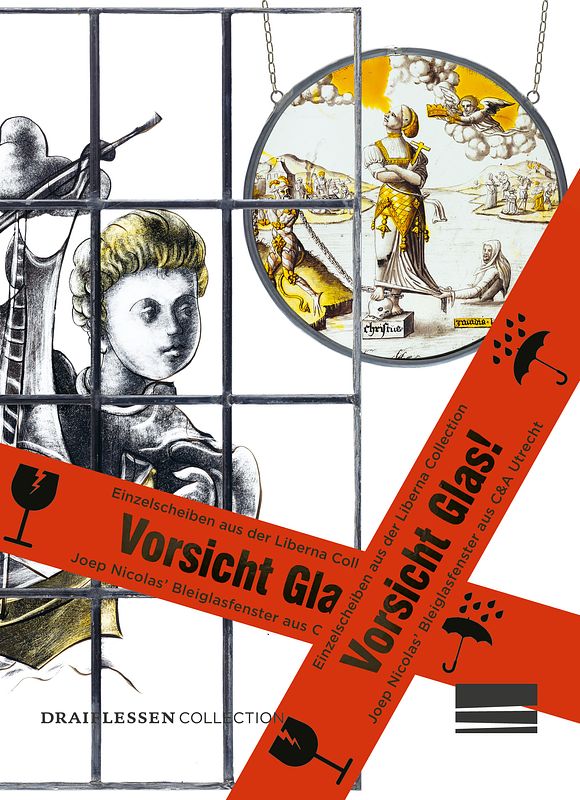
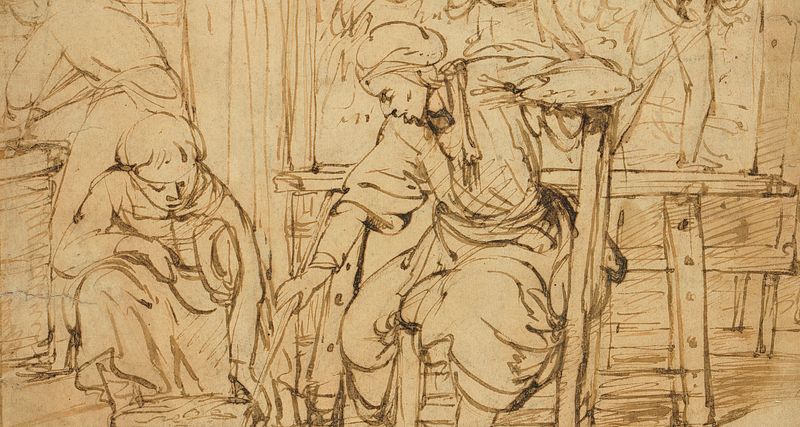
.jpg?locale=en)

